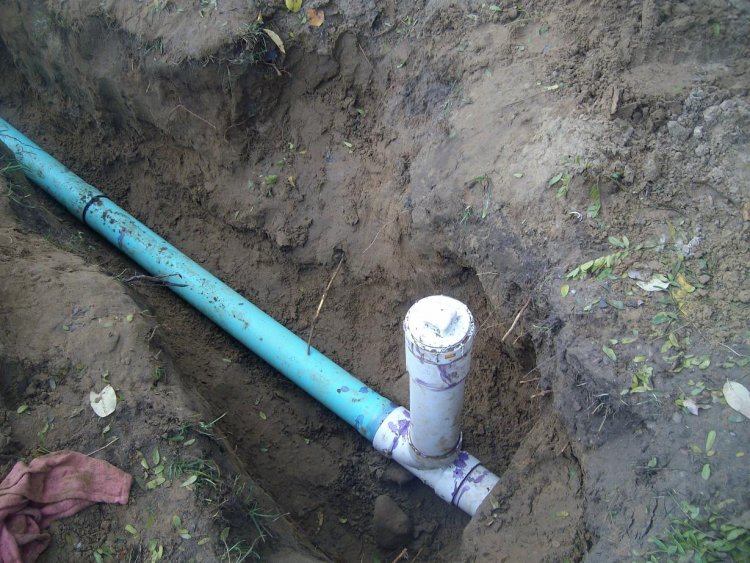How Septic Tank Cleaning Can Save You Money

Keeping your septic tank clean is vital to ensure it's operating properly. The tank needs to be pumped and maintained on a regular basis, and any blockages should be removed. In the event that your sewer system has been failing it is essential to fix it immediately. This will prevent expensive repairs from occurring.
The tank is being pumped
A septic tank that is pumped will help avoid expensive repairs in the future. Pumping is a process that absorbs solids and waste. This allows wastewater to be able to move through the system at a faster pace.
Septic tank pumping is a service that requires specialized equipment. A vacuum truck fitted with a heavy duty hose will eliminate the bulk of the waste. The vacuum truck will also eliminate the majority of the debris.
When a septic tank is pumping, the tank's lid should be opened. The pumping technician then pump one of the compartments. During the pumping process the operator of the muck rake is expected to stir up the tank in order to eliminate the settled sludge.
A septic tank should be pumped every two to three years. The frequency of pumping a septic tank will depend on the number of persons living in the house as well as how much water is used. homes that host frequent guests, who use huge quantities of water or dump food items through garbage disposals might require having their tanks cleaned more frequently.
The most effective method of cleaning a septic tank is to hire a professional. Chemical cleaners can harm the tank and lead to clogs.
Before hiring an septic tank pumping service, make sure they're licensed to provide this service. A certified technician will be able to tell you if you need to include other additives or enzymes. The cost of these additives ranges from between $20 and $200.
Septic tanks are built to store water from the bathroom, sink shower, and sink. If there is a blockage at the drain pipe the water could spill over to the table of ground water. This is a risk to the environment and could create an unpleasant smell in the house.
Disintegration of sludge and other layers
During cleaning, disintegration of the sludge and scum layers takes place in a septic tank. The purpose of a septic tank is to decrease the velocity of wastewater through the separation of solids that are heavier and sink into at the base of the tank. The wastewater flows into the outlet of the tank and enters the drain field.
The sludge layer covers around one-half-to-two-thirds of the total tank volume. These layers differ by differences in density. The middle layer is made up of suspended and liquids and the lower one is made of sludge. The sludge layer is typically comprised of grease, fats and oil.
The volume of the sludge layer is reduced by anaerobic bacteria. Anaerobic bacteria live in tanks that are not oxygen-free and consume organic matter within the sludge. These bacteria give off gases as they decompose the sludge. They also decrease the amount of solids accumulated that are in the scum layer.
The rate of sludge accumulation is controlled by the temperature and the COD concentration in the waste. A https://www.septic-tank-servicing.com can reduce the amount of sludge that accumulates, while the lower temperature can increase the rate. The sludge layer also contains soluble compounds, which are produced by the anaerobic bacteria.
The efficiency of septic tank cleaning depends on the quantity of sludge that is accumulated. A properly constructed septic tank should be able to store sludge for at 5 years at a minimum. However, the amount of solids that accumulate is different from case case. The exact storage duration can only be established by regular inspections of septic tanks.
It has been shown that application of anaerobically digested waste sludge can boost the yield of the system of septic tanks. The sludge used in the tests included PAN values of 27-42percent..
Inspection of the drainage field
Conducting an inspection of the drain field can be intimidating. There are numerous things to check for such as smells that are unpleasant as well as grass that is growing on the drain system, and cesspools. These are all signs of the septic system in need of maintenance.
The National Association of Certified Home Inspectors suggests performing an inspection at least once per year or every three years. An inspection will look at the flow rate of the system and pressure, as well as the age and maintenance history.
It is another test that is performed in the course of inspection. It is a test to determine what amount of dye in the water draining. It also tests for backflow from the absorption zone. However, if the dye isn't of sufficient quality the dye could be of little value.
A visual inspection of the drain field is also required. A septic inspector will check for cesspools, mold, and visible Puddles. Additionally, the inspector will look for indications of blockage.
If you're using an septic system it is important to be familiar with the components and their function. If not, you might want to think about employing a professional to do the task.
Septic systems can fail for many reasons. A blocked or broken piping can cause a sinkhole or ponding. Additionally, an absorption system may fail if it's a bit overloaded. A leaking tank is very common.
A septic tank is designed to allow for time for wastewater to be able to dry before it gets to the field of drain. This is necessary to prevent the build-up of scum. This can be accomplished by using sanitary tees to keep solids from clogging up the drainage field.
In the event that the sewer system is leaking the effluent will contain nutrients that are needed for the growth of plants. But, a leaky leach field could result in destruction to the tank as well as the distribution box or the connection. It could also cost a lot to repair.
Clogs that require to be cleared
During the cleaning process of your septic tank may have clogs that need to be removed. The first thing to determine is the cause of the clogs. You can do this by looking at the sewer line running from your house to the septic tank.
If you see indents on the ground or have odd soggy patches in your yard It could be the right time to have the primary sewer line cleaned. The price to clean 10 feet of main sewer line is between $350 and $650.
It is also possible to replace a portion of the main sewer line. A blockage that happens in the sewer line can cause other issues like sewer back-ups. It is possible to clear small clogs by boiling water in a kettle. It will help break up the soap and grease build-up inside the pipe.
You can also use a chemical drain cleaner. However, they could cause more damage than good. Additionally, these chemicals could kill the good bacteria in your septic tank. They also cost more in the long run.
Another way to unblock drains is to make vinegar and baking soda mix. Both ingredients need to be poured slowly into the drain. Then, follow it up with an effective shot of water that is hot. This can be enough to clear smaller blockages.
If you've got a clog that is too large to clear on your own You may need to hire a plumber to clear it. This is especially true when you reside in an older house. This is due to the fact that your sewer lines are more prone to clog than a newer home.
To clear clogs within pipes, you could use the drain snake. The tool comes with a long, stiff cable. The cable is able to push the clog out of the pipe.
Maintenance of the septic system
Whether you own a home with a septic system or you're thinking about buying one, it is important to be aware of how to properly maintain your system. It is crucial for the health of you and your familymembers, and also for the environment.

The septic is created to treat the waste that is generated in your home, including the sewage you wash with when bathing. The wastewater is then transported to a tank before being transferred to a leach field. The drain field is just as important in the same way as the tank. The soil of the field is used to remove the harmful substances from the waters.
Septic systems need to be cleaned regularly. The frequency of pumping depends upon the capacity of your tank as well as the number of people living within the house. It is estimated by the Environmental Protection Agency estimates that a tank and leach field is required to be pumped every three or five years.
Along with pumping, septic systems need maintenance. Ineffective maintenance can lead to rapid algae growth, which could harm groundwater in the area.
A septic system needs to be checked every couple of years. This will keep your tank from being damaged and leach field. It can also save you from expensive repairs.
If you are noticing a foul noise or smell coming from your septic system, it could be a sign that something is wrong. The odor can be caused by the absence of sealant water in toilets.
Also, you should consider getting an expert opinion on your septic system. The second opinion you get will save you a lot of costs for repairs.
A septic system can be an expensive investment. If you are planning to sell your home, you'll require an inspection. The inspection will help you determine the value of your house and determine the expense of future maintenance.
